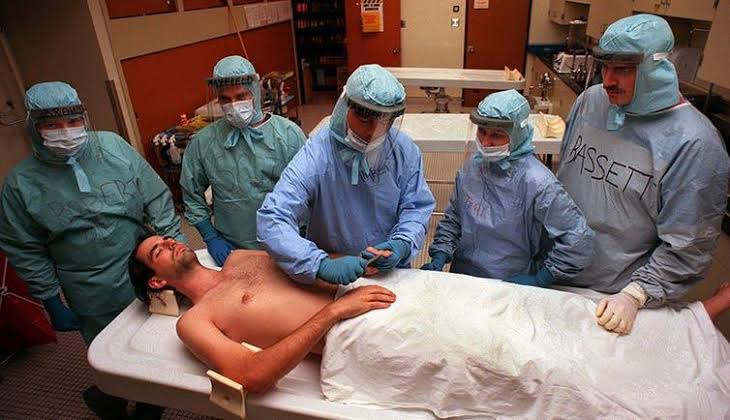Preservation is appropriate when the cadaver is safe from harm, destruction or decomposition.
For preservation treat the cadaver with special chemicals i.e.. embalming which includes several preservation methods.
Methods for preservation of cadavers –
- Modern method
- Ancient ayurvedic method
Modern preservation methods-
Modern methods work on the principle of preserving the cadaver for a long time.
- Glutaraldehyde was the first chemical used for embalming but it leaves yellow stain in the tissue that can interfere with observation and research.
- Formaldehyde is main chemical used as embalming chemical now.
Preservation material –
- Carbolic acid or phenol
- Formaline
- Glycerine
- Spirit
- Tarpentine oil
- Water
- Staining fluid
- Red lead
- Pot
- Canula thread
- Surgical blade
- Scalpel
Preservation method-
- Put body in supine position .
- Pot of preservation fluid placed in surface of dead body.
- Canula fixed in femoral artery and preservation fluid passed through it . ( volume of preservation fluid per cadaver – 5-7 litre )
- Left common carotid artery is also used for preservation purpose.
Modern science includes three methods of cadaver preservation –
- Saturated salt solution
- Formaline solution
- Thiel solution

Ancient Ayurvedic methods-
Preservation material–
- Extreme cold rivers slow flowing water
- Bamboo cage
- Munja
- Kusha (dharbha)
- Chal
- Kshan
Method –
- Collect the dead body and perform the process of removal of antargata mala (intestinal faecal) takes place.
- Now, band the dead body with any one of munja, kusha, chal, kshan and then cover the body with a cage.
- Now, put the bamboo cage that have the body inside it in river having cold and slow flowing water .
- Leave the body in the river for next seven days.
- After seven days, collect the body from the river .
Modern methods of cadaver preservation evolved after ancient ayurvedic methods because modern methods prevent the body for a long period of time as compared to the bodies preserved by ancient methods as they have to be used immediately .